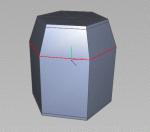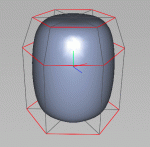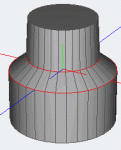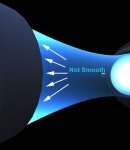faceted cylinder
Hi all. I'm working on a science illustration here at work and I've been trying to render some objects that are cylinders of varying diameters. The way the material is interacting with the lighting makes them look smoothly round, but the sharp edges still show the faceting of their polygons. I tried using a subdivision or smooth modifier but that smoothed out everything. I still want the edges that represent the diameter transitions to be sharp. I'm sure this is something basic I'm doing wrong but could you help? I've attached a render.
Thanks.

Hi all. I'm working on a science illustration here at work and I've been trying to render some objects that are cylinders of varying diameters. The way the material is interacting with the lighting makes them look smoothly round, but the sharp edges still show the faceting of their polygons. I tried using a subdivision or smooth modifier but that smoothed out everything. I still want the edges that represent the diameter transitions to be sharp. I'm sure this is something basic I'm doing wrong but could you help? I've attached a render.
Thanks.








